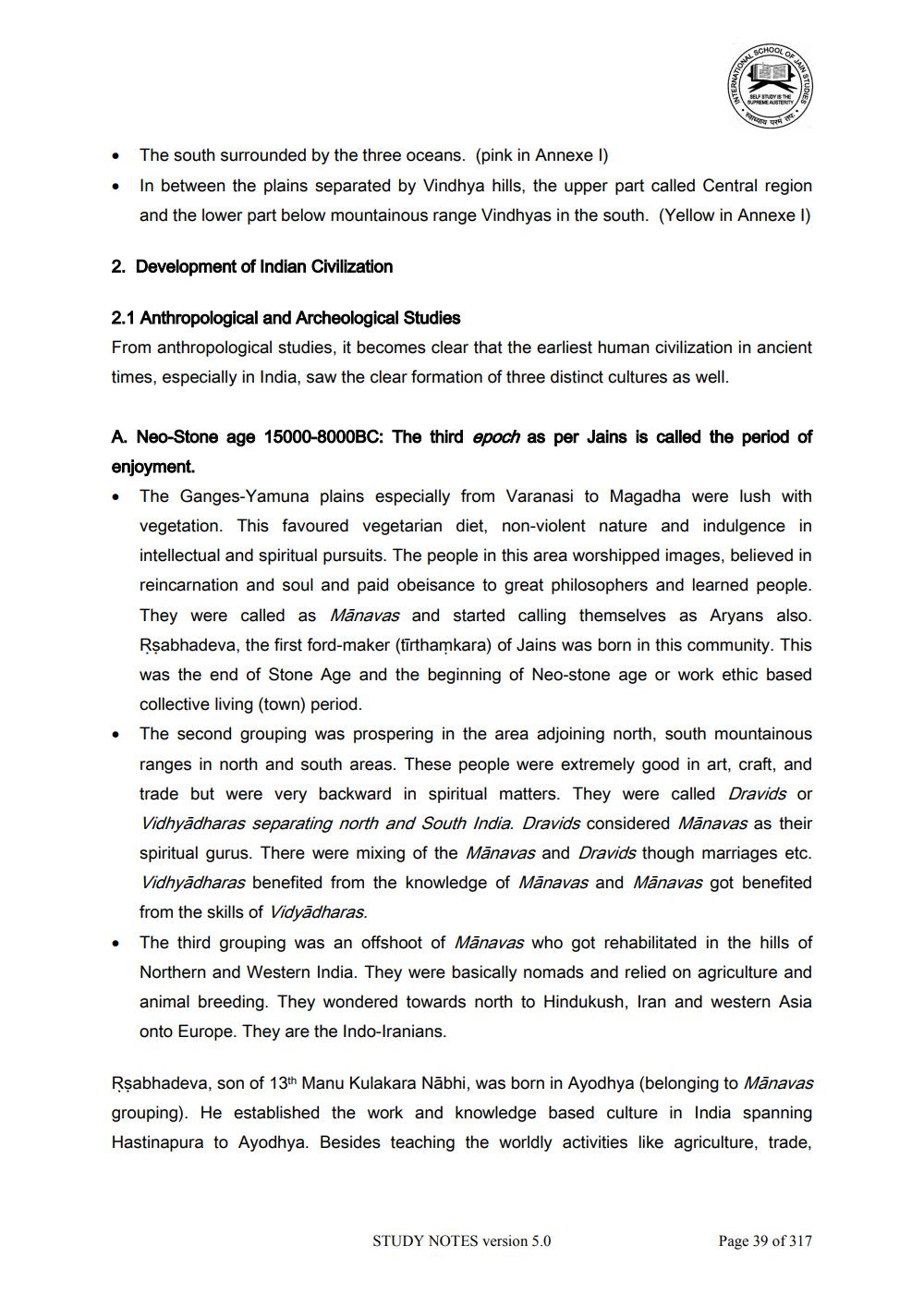________________
•
2. Development of Indian Civilization
SCHOOL
•
OF
AN STUDIES
The south surrounded by the three oceans. (pink in Annexe I)
In between the plains separated by Vindhya hills, the upper part called Central region and the lower part below mountainous range Vindhyas in the south. (Yellow in Annexe I)
SELF STUDY IS THE SUPREME AUSTERITY,
Farenga
परमे
2.1 Anthropological and Archeological Studies
From anthropological studies, it becomes clear that the earliest human civilization in ancient times, especially in India, saw the clear formation of three distinct cultures as well.
A. Neo-Stone age 15000-8000BC: The third epoch as per Jains is called the period of enjoyment.
The Ganges-Yamuna plains especially from Varanasi to Magadha were lush with vegetation. This favoured vegetarian diet, non-violent nature and indulgence in intellectual and spiritual pursuits. The people in this area worshipped images, believed in reincarnation and soul and paid obeisance to great philosophers and learned people. They were called as Manavas and started calling themselves as Aryans also. Rṣabhadeva, the first ford-maker (tīrthamkara) of Jains was born in this community. This was the end of Stone Age and the beginning of Neo-stone age or work ethic based collective living (town) period.
STUDY NOTES version 5.0
The second grouping was prospering in the area adjoining north, south mountainous ranges in north and south areas. These people were extremely good in art, craft, and trade but were very backward in spiritual matters. They were called Dravids or Vidhyadharas separating north and South India. Dravids considered Mänavas as their spiritual gurus. There were mixing of the Manavas and Dravids though marriages etc. Vidhyadharas benefited from the knowledge of Mänavas and Manavas got benefited from the skills of Vidyadharas.
The third grouping was an offshoot of Manavas who got rehabilitated in the hills of Northern and Western India. They were basically nomads and relied on agriculture and animal breeding. They wondered towards north to Hindukush, Iran and western Asia onto Europe. They are the Indo-Iranians.
Rṣabhadeva, son of 13th Manu Kulakara Nābhi, was born in Ayodhya (belonging to Mänavas grouping). He established the work and knowledge based culture in India spanning Hastinapura to Ayodhya. Besides teaching the worldly activities like agriculture, trade,
Page 39 of 317




